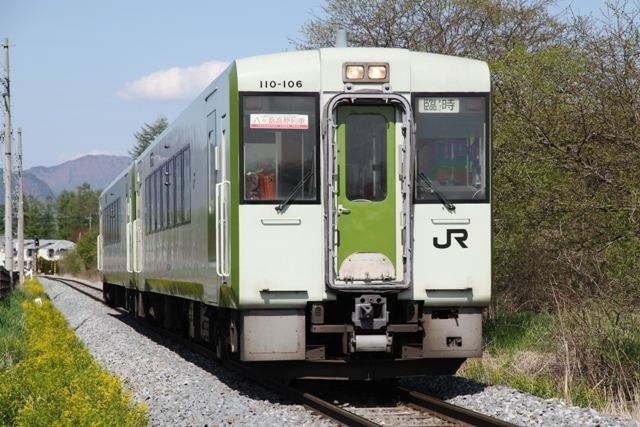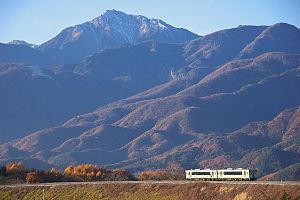Opened 1919 | Stations 31 Line length 78.9 km (49.0 mi) | |
 | ||
Terminis | ||
whole film ver koumi line the highest railway in japan 1 4
The Koumi Line (小海線, Koumi-sen) is a railway line in Japan operated by East Japan Railway Company (JR East). It links Kobuchizawa Station in Hokuto, Yamanashi with Komoro Station in Komoro, Nagano, and extends 78.9 km through the mountains with a total of 31 stations. It roughly follows the route of National Route 141, paralleling the road at some places and crossing it twice.
Contents
- whole film ver koumi line the highest railway in japan 1 4
- whole film ver koumi line the highest railway in japan 3 4
- Stations
- Rolling stock
- Special liveries
- History
- Timeline
- References

whole film ver koumi line the highest railway in japan 3 4
Stations
All trains stop at all stations.

Some of the stations along the Koumi Line are among the highest in Japan, with Nobeyama Station reaching 1,345 meters above sea level. Because of the frequent stops and winding route the full 78.9 kilometre journey often takes as long as two and a half hours to traverse, however the journey is well known for its beautiful scenery.
Legend
◇・∨・∧ - passing loop| - no passing loopRolling stock
Special liveries

In February 2015, to mark the 80th anniversary of the opening of the Koumi Line, a single-car KiHa 110 series unit was repainted into the "Metropolitan" all-over red livery carried by KiHa 52 DMUs formerly used on the line. This was followed in March 2015 by a two-car KiHa 110 series unit repainted into the vermillion and cream livery carried by KiHa 58 series DMUs formerly used on the line.
History

The Saku Railway opened the section from Komoro to Haguroshita in 1915, and extended the line to Koumi in 1919. The company planned a railway network extending from Kōfu in the south to Naoetsu and Nagaoka in the north, linking up with the Fuji Minobe Railway to create a coast-to-coast rail line. North of Komoro, Saku Railway obtained a construction permit for a section between Yashiro and Suzaka, but this was transferred to the local Katō Railway (predecessor of the Nagano Electric Railway). Due to World War I construction of the line south of Koumi was not undertaken. Diesel railcars were introduced on the line in 1930.
The Koumi - Saku-Uminokuchi section was opened in 1932 by Japanese National Railways (JNR), which also opened the Kobuchizawa — Kiyosato section in 1933. The Saku Railway was nationalised in 1934, and the Saku-Uminokuchi - Kiyosato section opened in 1935, completing the line.
